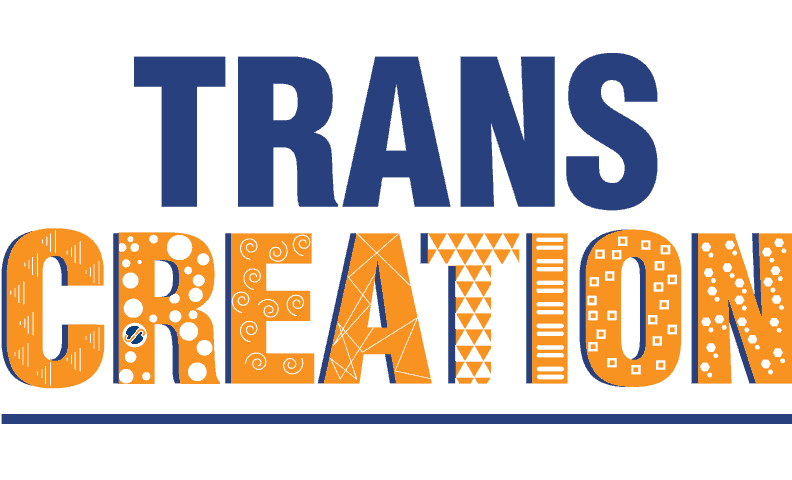
Episode 154: Answers to your Most Common Questions – free lessons
12/18/2017
Episode 155: Tools and Technology for Translators – Interview with Rafa Lombardino
01/08/2018This is a guest blog post by Albert Brown
Introduction:
How unique and efficient it will be, if the translations done from one language to another are not merely word to word, but also creative? That is precisely what transcreation offers. Though it is synonymously used with translation, there is a vast difference between the two. Transcreation can be defined as the expanded form of translation where the literal text is not so much focused upon. More than a word to word translation, it focuses on taking various factors into consideration like emotions, culture, and environment of the targeted audience and thereby recreating the concept from one language to another efficiently.
Transcreation, also commonly known as creative translation or marketing translation, is a term which is most widely used by advertising and marketing professionals to refer to the process of taking a message in one language and transporting it to a different language without compromising its tone, context, and meaning. Unlike translation, transcreation is used when the message matters more than the exact words. It takes not only the text but also the image into account, ensuring the suitability for the targeted audience. A successfully transcreated message carries the same essence and evokes the same emotion as that of the original message. It is a potent tool used by marketing and advertising campaigns to transcend the boundaries of language and culture.
Translation:
The dictionary defines translation as an act, process, or instance of translating, such as a rendering from one language into another. In simple terms, it is translating a source language text into equivalent target language text word by word. The most significant disadvantage of translation is that most of the time, in this word to word translation, the real essence and meaning of the text is lost. Unlike mathematics, where there is usually a right and a wrong answer, language is much subtle. Therefore, no two translators will be able to produce precisely the same finished texts even though both are equally accurate. To sum up, translation is using judgment and skill to translate a message in one language, to the very same message in another language. The message, not words.
Purpose of Transcreation:
As the market continues to evolve, the advertisement must be compelling enough to reach the minds and hearts of people. Thus, adequate translation of message is essential in achieving an effective marketing strategy. The fundamental purpose of transcreation is to transfer the intent, style and emotional salience of a message from the original language to the targeted one. The goal of transcreation is to keep the meaning and emotion of text while adapting a new audience’s culture. Therefore, it is vital that not only the words but also the culture, dialects, and context must be considered equally. This may at times result in significant changes to the original message, but the soul of the message remains same because transcreation attempts to bring about the same feeling by saying something different. Any lack of knowledge about the local values and beliefs can have a very adverse effect on the marketing strategies of companies. So, a transcreator must have expertise in marketing, as well as linguistic skills and a firm grasp of targeted cultures.
The Process of Transcreation:
Transcreation is not something that is a single step process. In order to reach the final output, many steps are to be followed. The first step in the process of transcreation is having a thorough understanding of the purpose of the message which is transcreated. Knowledge about the primary intention behind the message is very vital because it is important to know what the sender wants the new audience to feel, what kind of emotions does the sender intend to arise and lastly what kind of action the sender desires from the modern audience. If these factors are not apparent, the impact on the new audience will not be same as that of the original one.
The second most important step is the adequate and enough knowledge, not only of the original audience but also of the new audience you will be dealing with. This deep-rooted understanding will help a lot in the process of transcreation as it helps in achieving the desired style and tone. Only the team with a deep-rooted understanding of both the cultures will be able to create a stronger impact. Last but not the least, is the skill to produce creative content. The above two steps will fail if the team does not have acceptable skills. Therefore, it is required to have a transcreator who not only has the skills to translate language but also has proficiencies to understand the new culture and thus be able to create a creative content.
Examples of Transcreation:
Here are some examples of how companies turned to transcreation when launching their products in different countries:
- When the famous brand, Coca-Cola, entered the Chinese market, the most significant challenge they faced was the transcreation of their brand name in the Chinese language. The issue was that the literal translation of the brand name turned out to be “female horse fastened with the wax pole.” Then, the following year, the company made its official launch by slightly changing the pronunciation to keep the meaning intact.
- When Mitsubishi Motors launched its Pajero car in Spain, it failed miserably, resulting in zero sales because Pajero in Spanish means tosser. The company soon realized the cultural mistake they had made they chose to change the name to Montero for the Spanish audience.
- One of the most famous brands, Mc Donald’s, knew that the Chinese would find it offensive to use the word ‘love’ in public. So, it adopted a smarter transcreation approach in which they transcreated the tagline ‘I’m loving it’ to ‘I just like it.’ This smarter approach saved them from creating a blunder in the new market.
- To market a contraceptive product for females to two separate populations – U.S. English-speakers and U.S. Latinas, the transcreators researched on what drives women in each demographic to choose contraceptive products. Therefore, the pharmaceutical company created an advertising campaign that looked same but appealed in different ways to their targeted audiences. The main thrust for the English version was about convenience, and that for the Spanish version was about freedom of choice.
- In another case, Intel, a computer chip-maker wanted to bring a new campaign to Brazilian market named ‘Intel: Sponsors of Tomorrow.’ But later, it was found out that this tagline in Portuguese meant that Intel would not deliver on its promises immediately. Therefore, the line was modified directly as “Intel: In love with the future,” matching to the nature of the targeted audience.
- Another interesting case was of an automobile manufacturer SAAB when it launched a new convertible model. The idea of the campaign was telling the audience that the car allowed passengers to experience wide-open spaces. So, in the US, the ad ran with a tagline “Saab vs. Oxygen bars”, because oxygen bars were popular in the U.S. at the time. In Sweden, where there were no oxygen bars, the same ad ran with the headline “SAAB vs. klaustrofobi. The change of one word changed the literal meaning of the message but appealed to the same emotions in both the countries.
The above examples clearly tell that how important it is for your brand name to have an effective transcreation. Failure to this may affect not only the sales but also the reputation and brand name of the company.
Neglecting Transcreation can affect your business worst:
The importance of transcreation for a company becomes clear when we have a look at the list of companies who decided not to concern themselves with the cultural sensibilities of their target market and have thereby incurred bad names. The harm to the reputation of such enterprises teaches the value of transcreation very efficiently. The best example is when Puma decided to launch a shoe to commemorate the 40th anniversary of the United Arab Emirates in 2011. That product received a furious response because the company printed the country’s flag on the shoe which was considered very disrespectful. This clearly depicted that in order to build the brand loyalty; it is advisable not to disgrace the symbol of any nation.
It must be kept in mind that transcreation is not only about words but also imagery. Even the most carefully worded campaign can fall flat when the images isn’t appropriate or sensible. For example, Pampers Nappies had a very successful campaign, which used the image of stork which delivers babies to expectant parents. But while launching the same campaign in Japan, the company faced a lot of embarrassment because they used the same recipe there. Instead of tasting the success, they met a lot of criticism by the Japanese people because there is an analogous Japanese legend in which babies are delivered to parents on giant peaches that are ferried down rivers and streams. This tiny mistake was costlier than expected because of the lack of cultural knowledge. These examples clearly tell that how badly neglecting the transcreation may affect any business.
Conclusion:
Companies looking for marketing across different cultures and languages must not forget that different places have different cultures and a single formula cannot be applied to all of them. Depending upon the targeted audience, the message to be delivered must be transcreated so as to have an active and positive impact on the new audience. The text, as well as the images used, must go with the people and culture of the land to avoid any kind of embarrassment. Transcreation must be adopted if the company wants to make a good and positive name across borders because undoubtedly, transcreation is the real Evolution in the world of Translation.
Author Bio:
 Albert Brown, passionate writer & translation consultant. He is fond of reading about different cultures & traditions being followed across the world. He loves visiting new places and learning different languages. Reading and writing about the importance of language and its variations is something that keeps him busy during free time. Guiding people about the right source is something he is known for. Find out more about Albert’s company – Translation Excellence here.
Albert Brown, passionate writer & translation consultant. He is fond of reading about different cultures & traditions being followed across the world. He loves visiting new places and learning different languages. Reading and writing about the importance of language and its variations is something that keeps him busy during free time. Guiding people about the right source is something he is known for. Find out more about Albert’s company – Translation Excellence here.




5 Comments
Thank you for educating everyone, especially potential clients, about translation and transcreation. This word is new to many and difficult to grasp for even more!
The power of translation is multiplied through transcreation. It is a greater partnership. Outside literature and translation theory, general articles like this inform the general public. Let’s hope the message spreads about this mode of communication.
Thank you for this very insightful article. I think the most important take-away for me is, to always keep your audience in mind – and the example about the contraceptive product was a great example for that.
When I transcreate content, I always try to take a step back and think about how something SOUNDS to the audience, what FEELINGS it might evoke in them – it’s a very emotional process in my opinion.
Thanks Michaela! Yes, the feelings it might evoke and the perception are both important to consider.
Great post, Albert! A good collection of transcreation failure examples in one place. Very informative.
Awesome explanation. Transcreation will be a very powerful strategy to promote your brand. Thanks for this amazing content.